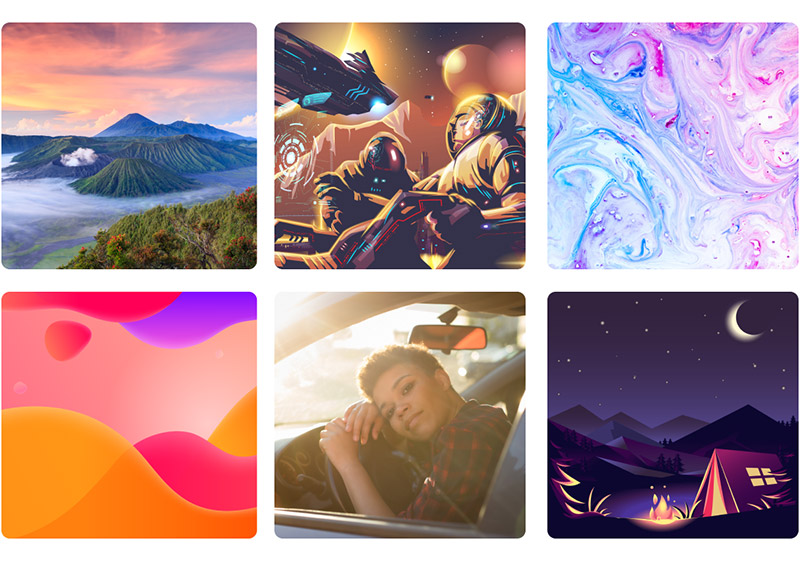Artwork and graphic design include both positive space and negative space. The positive space is the subject or the area of interest in the design or art. Negative space is the area surrounding the subject or in between multiple subjects.
Negative space may seem like an afterthought, but it can actually be a very important aspect of design. It helps to provide balance and proper spacing, can be used to direct the viewer’s eye, and can also be used creatively to work with the positive space.
Related: What is the Rule of Thirds?
A Brief Background on Negative Space
One of the most well-known examples of the use of negative space is Rubin’s Vase. Danish psychologist Edgar Rubin created this famous image to showcase the power of perception.
In black and white art or printing, the subject (or positive space) is typically in black and the negative space is typically white (think about black letters or dark pencil marks on white paper). In Rubin’s Vase this is reversed. The subject is a white vase in the center. The curves of the vace and the use of negative space work together to create the appearance of two faces.
If you’re focusing on the positive space in the design, you’ll see a white vase at the center. If you’re focussing on the negative space, you’ll see the profile of a face on each side of the vace. The subject is a vace, but your mind will fill in the blanks and see the faces.
While Rubin’s Vase is an extreme example, the creative use of negative space can also be far more subtle. The logo of FedEx is another well-known example of negative space in design. The negative space between the letters “e” and “x” forms an arrow. Viewers may or may not notice this when looking at the logo.
Get millions of stock images and videos at the best price
Unlimited access. No attribution required. Starts at just $9/month.
Vectors That Incorporate Negative Space
Here at Vecteezy, we have many vectors that use negative space in one way or another, and we’ll showcase a few of them below. Click on any of the images and you’ll be led to the download page.
The first vector we’ll showcase uses negative space for the hair of the two women. With the solid black background, the contrast between positive space and negative space creates the perception of hair.
In the vector below, the woman’s dress matches the background color, making use of negative space.
Here we see how five elements in different colors are aligned in a way that allows the negative space to form a star. Negative space is often used for creative effects like this with logos.
Negative space is used to create the appearance of clouds, mountains, and land in this vector. The river winds through the foreground, creating the perception of land through the use of negative space.
The vector below takes the same approach, but this time with a space theme (same designer as the previous example). Silhouettes are used to form the mountains and astronauts.
In this design, negative space is used to create the letter “s”. The letter isn’t fully outlined, but your eyes still tell you it’s an “s” because your brain fills in the missing detail.
Here, negative space is used to create the letters in “birthday”.
And this banner takes a similar approach (same designer as the previous example). Negative space is used to create text and long shadows.
Conclusion
Negative space can be extremely useful for designers. It may require some practice and you may need to stretch your creativity, but negative space in mind while you’re designing in order to get the best results.
Lead image by heijo.











